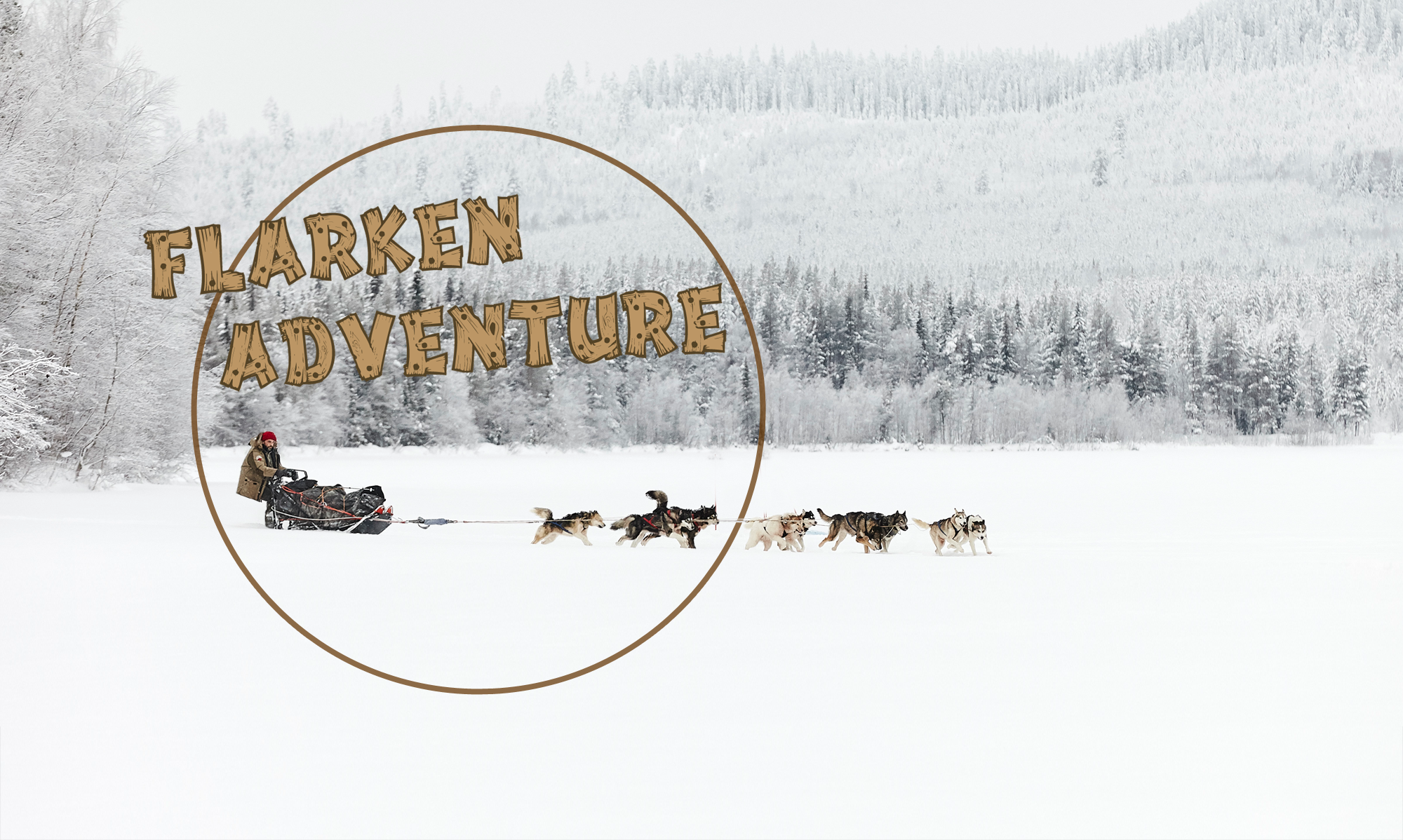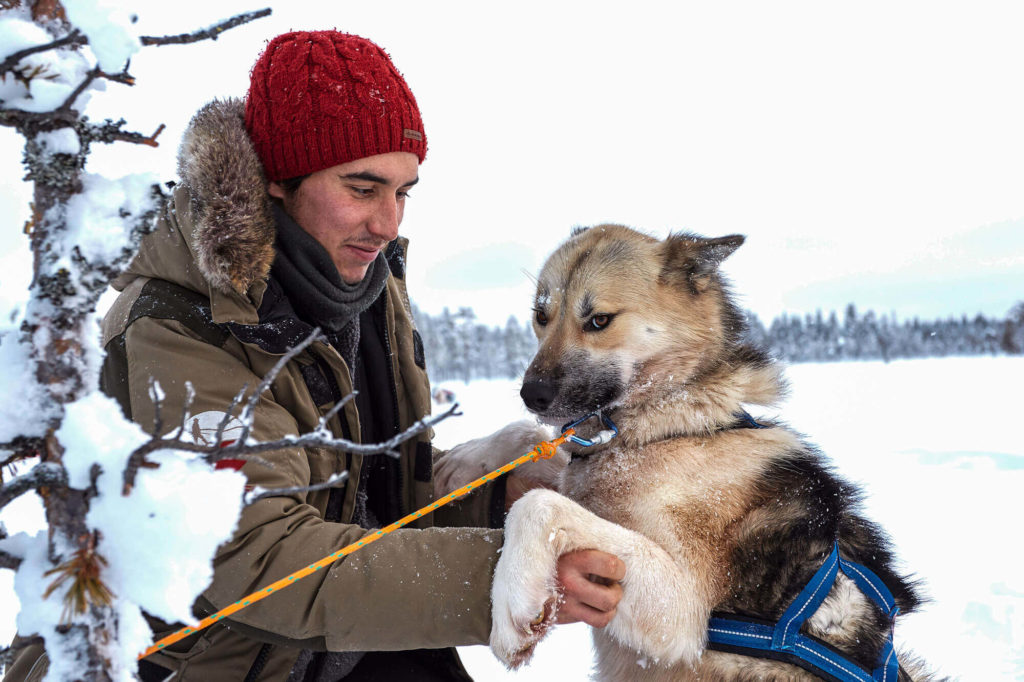Traveling in the Great North during winter is an incredible experience—provided you have the right extreme cold weather gear. Here’s everything you need to know to gear up like a pro for your winter vacation in the Far North.
The Far North in Winter : Another World
Endless snowy landscapes, frozen lakes and forests, stunning daylight hues, and magnificent northern lights at night—it truly feels like stepping into another world. It’s also the perfect opportunity to try unique activities like dog sledding, Altai skiing, snowshoeing, ice fishing, and more. However, the thought of being outside in –30°C weather can be intimidating.
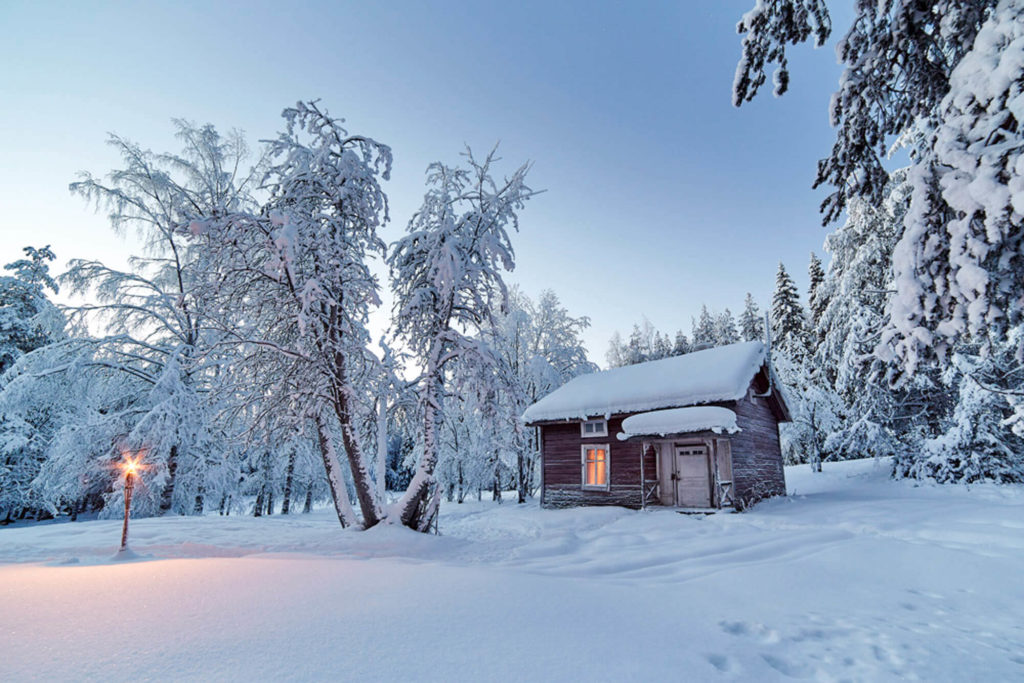
We Know the Cold of the Far North!
Settled in Swedish Lapland since 2012 with our sled dogs, and we love and know the Arctic cold. In winter, we organize dog sledding safaris with four-day expeditions driving your own sled team, as well as multi-adventure trips including dog sledding, Altai skiing, snowshoeing, ice fishing, horseback riding, and visiting a reindeer herd. We spend the entire winter outdoors, often in extreme cold. Thanks to the cold weather gear we provide and our advice, we often hear our guests say at –15°C, “Actually, it’s not bad—I’m not as cold as I am in winter in France!”
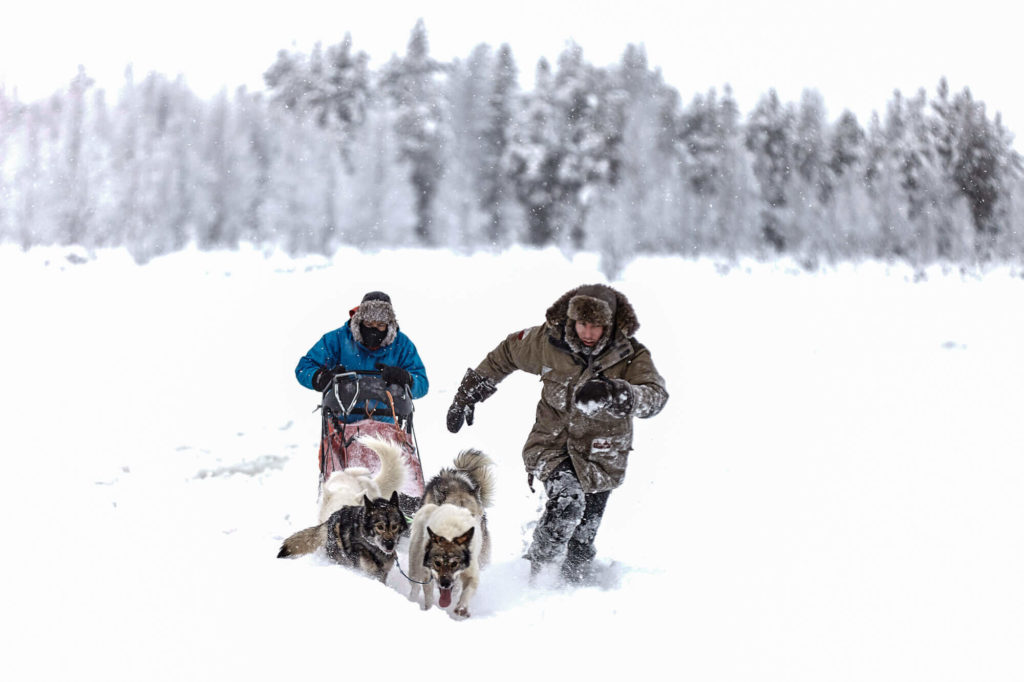
The Climate of the Far North
Not all polar regions have the same climate. For example, Lapland stretches across northern Norway, Sweden, Finland and Russia’s Kola Peninsula. The climate and temperatures vary greatly depending on the region’s topography. Going further north doesn’t always mean colder temperatures or more snow.
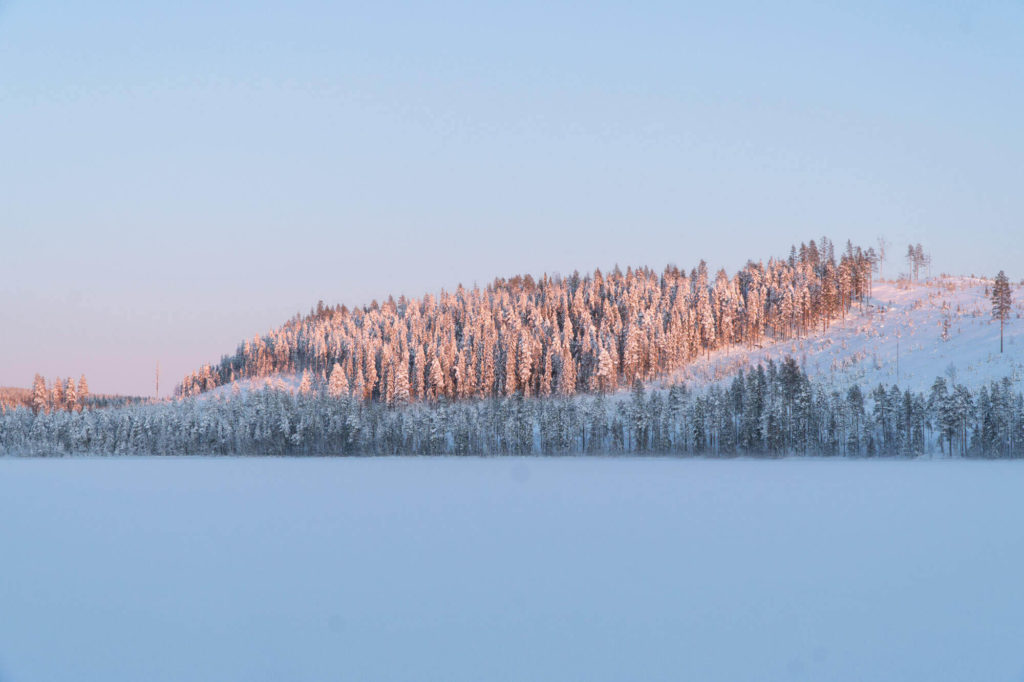
It’s important to research the specific region you’re heading to. At Flarken Adventure, located in Västerbotten in Swedish Lapland (about 200 km south of the Arctic Circle), winter temperatures typically range from 0°C to –30°C but can drop as low as –40°C. In the winter of 2018–2019, the region experienced five straight weeks at –30°C. However, winter 2019–2020 was much milder, with temperatures between +2°C and –10°C. Climate change is being felt even here in Sweden. January and February are usually the coldest months, while March brings longer days and warmer temperatures.
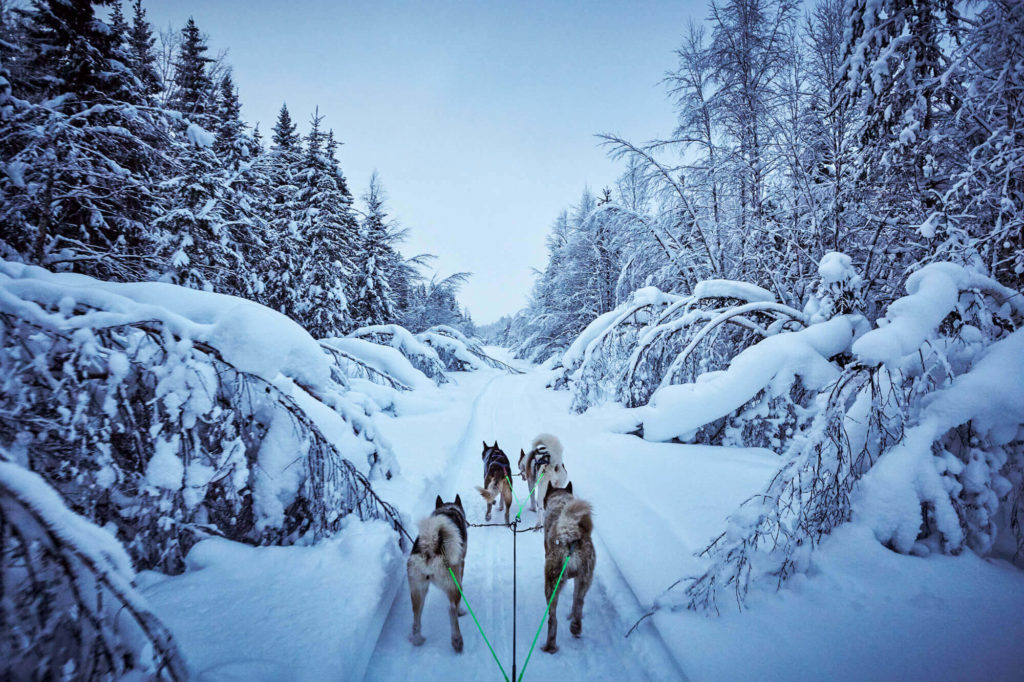
Dry Cold in the Far North
The air in the Far North is typically very dry, which makes the cold feel less harsh compared to the damp cold in places like France. You’ll likely handle –15°C in Lapland better than a rainy –2°C in France. Plus, you won’t be wearing jeans and a turtleneck—you’ll be dressed like the Michelin Man, appropriately equipped. Don’t miss out on the northern lights just because you’re too cold to stay outside—gear up! Hypothermia and frostbite are real risks.

How to Dress for Winter in the Far North
How Cold Protection Works
Our bodies generate heat, which circulates through our bloodstream. Clothes don’t warm us; they trap the heat our bodies produce. Good clothing acts as insulation. To withstand extremely low temperatures, we must retain as much body heat as possible.
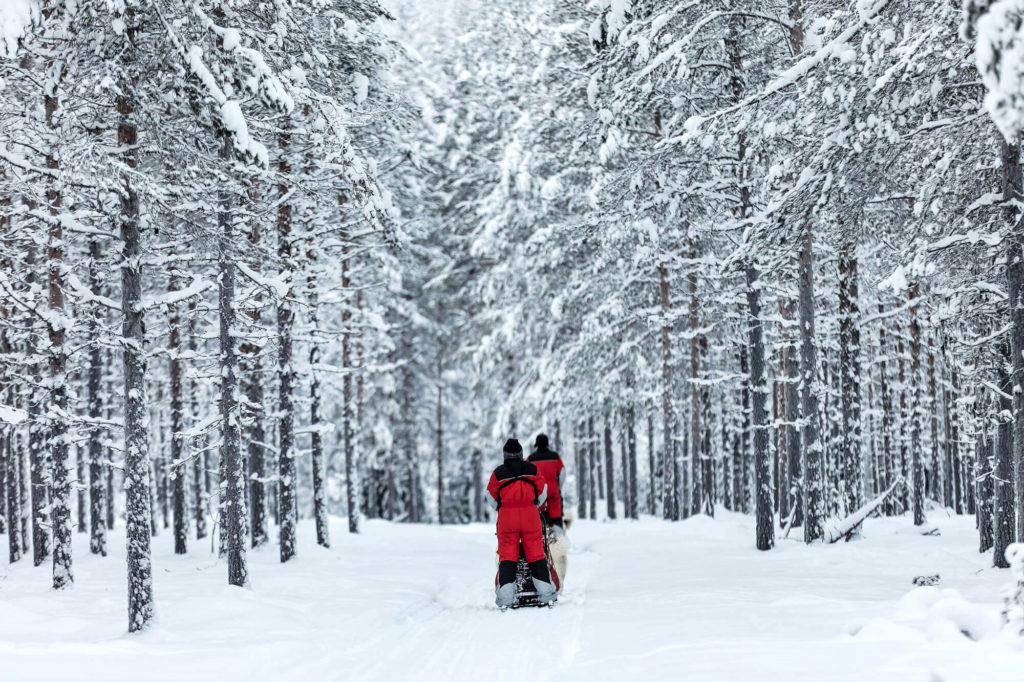
Body Parts Most Vulnerable to the Cold
When it’s freezing, the body prioritizes protecting the brain and vital organs (heart, liver, kidneys, etc.), mainly heating the head and torso. That’s why fingers and toes are usually the first to feel the cold. It’s essential to properly insulate your head and torso to keep the rest of your body warm.
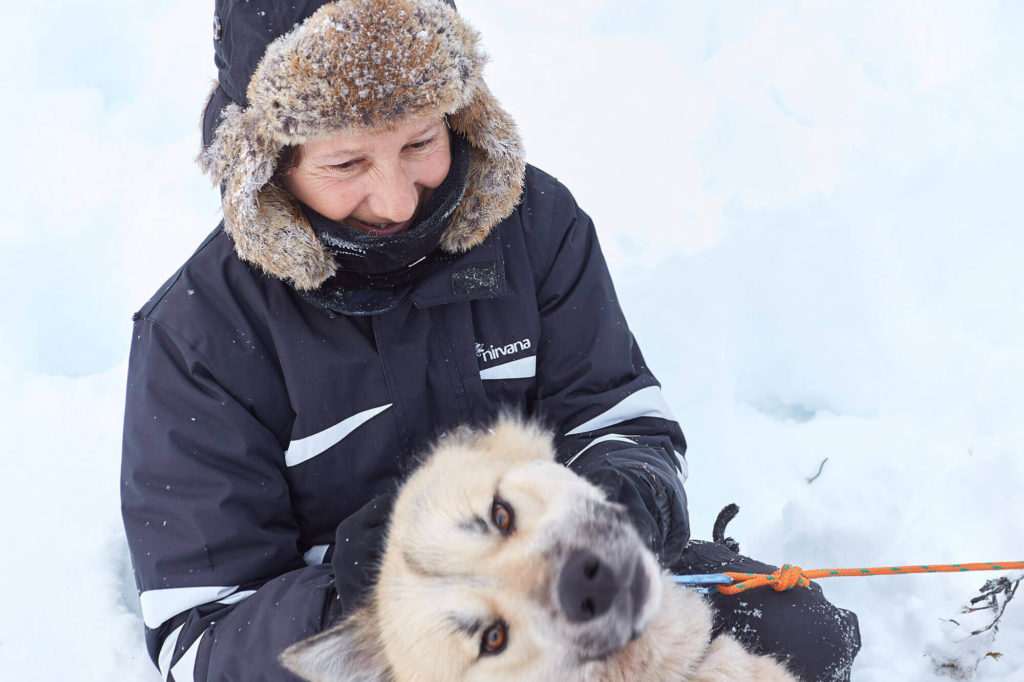
Head
The best protection for your head is a good chapka (trapper hat), which covers the forehead, ears, and cheeks—perfect for dog sledding. In milder temperatures, a beanie or balaclava can be sufficient.
A neck gaiter is essential—far more practical than a scarf, which can get in the way. It also protects your nose and cheeks (unless you wear glasses, which can fog up—if you can, use contact lenses). Protect your eyes from the glaring sun reflecting off the snow with good sunglasses or a ski mask.
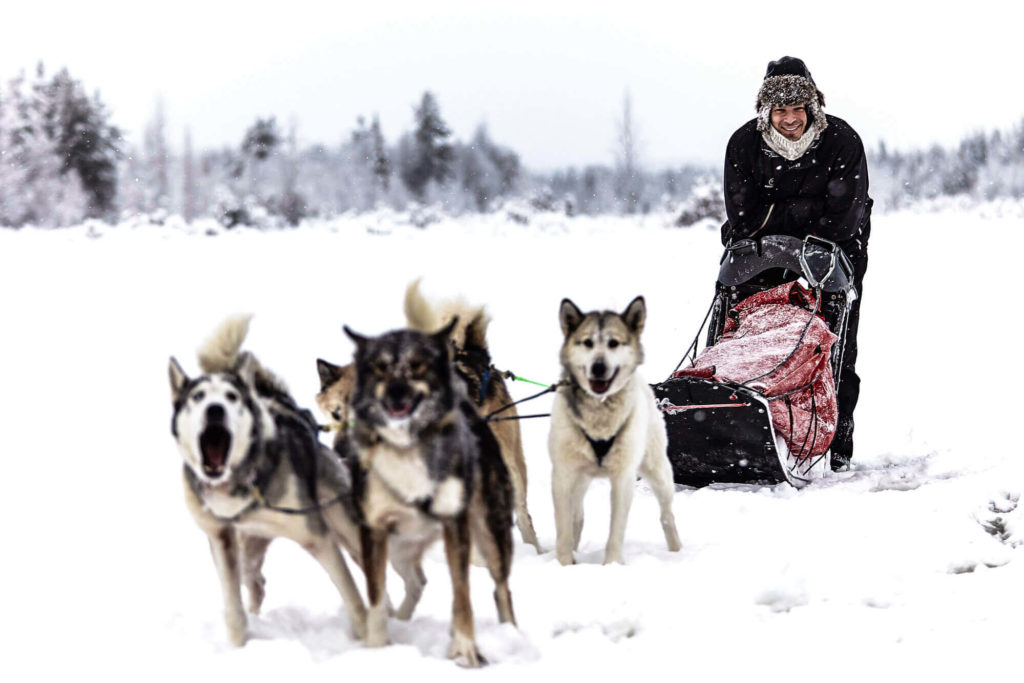
Feet
Many travelers think wearing multiple pairs of socks will keep their feet warmer. Big mistake! One good pair of wool or merino socks is enough. If you wear two pairs (MAXIMUM), the second pair must be larger to avoid compressing your feet and restricting blood flow. It’s the air trapped between layers that insulates—not tightness.
Avoid tight ski socks, which can act like a tourniquet. If your feet sweat a lot, bring 2–3 pairs per day to change them. Wet feet at –30°C = cold feet. Never sleep in the same socks you wore during the day.
Footwear is crucial to avoid frostbite. Choose snow boots (like Sorel or Kamik), which are designed for extreme cold. They usually have a leather upper, rubber lower, and removable liners for quick drying. Get one size up for thick socks and room to move your toes.
Avoid “moon boots”—they’re fine for evening strolls but not for outdoor activities.
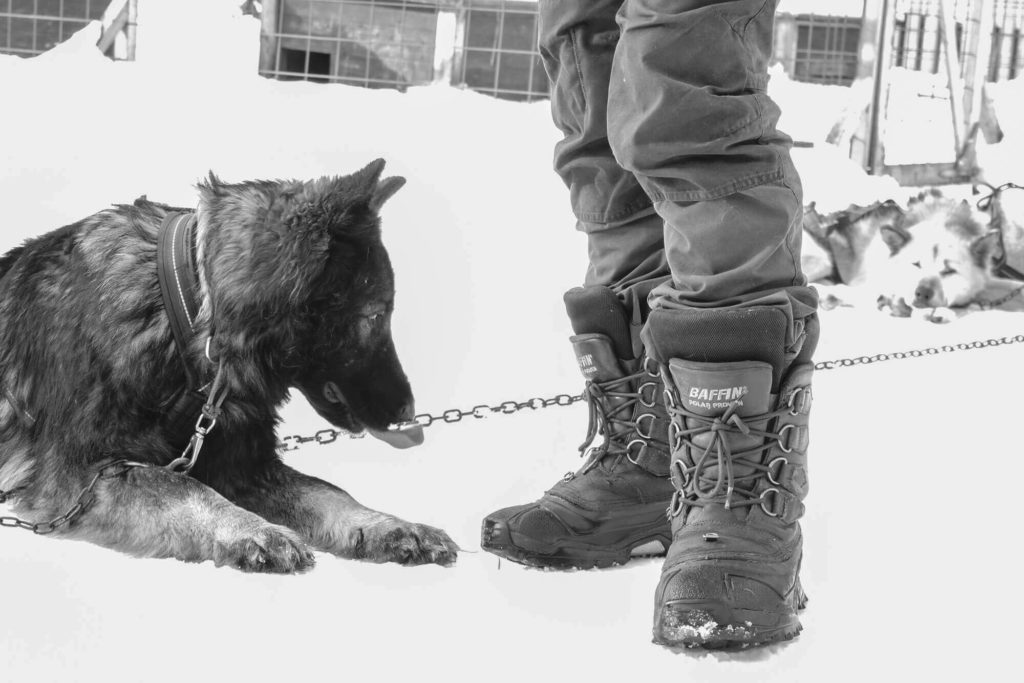
Hands: Liners, Gloves, or Mittens?
The common recommendation: thin liners (fleece or silk) for dexterity + thick waterproof, windproof mittens. But—important! Remove liners before putting on mittens to avoid trapping moisture inside. Wet liners = cold hands.
Mittens are better than gloves for activities like dog sledding or snowmobiling—they keep your fingers together and warmer. For physical activities like skiing or snowshoeing, gloves are usually fine.
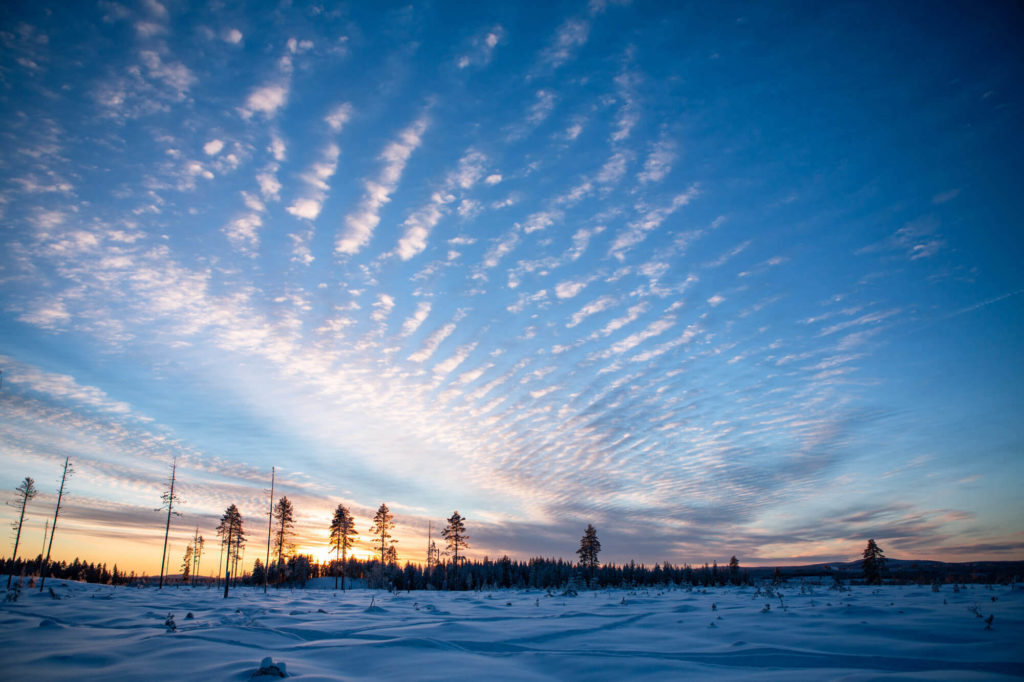
Upper Body – Use the layering system:
- Base layer: close-fitting, breathable thermal underwear (not cotton!)
- Mid-layer 1: lightweight fleece
- Mid-layer 2: thicker fleece
- Outer layer: windproof and waterproof jacket (e.g., Gore-Tex)
Don’t let yourself sweat in the cold—if you’re hot, remove a layer. Once damp, you’ll struggle to warm up again unless you change clothes.
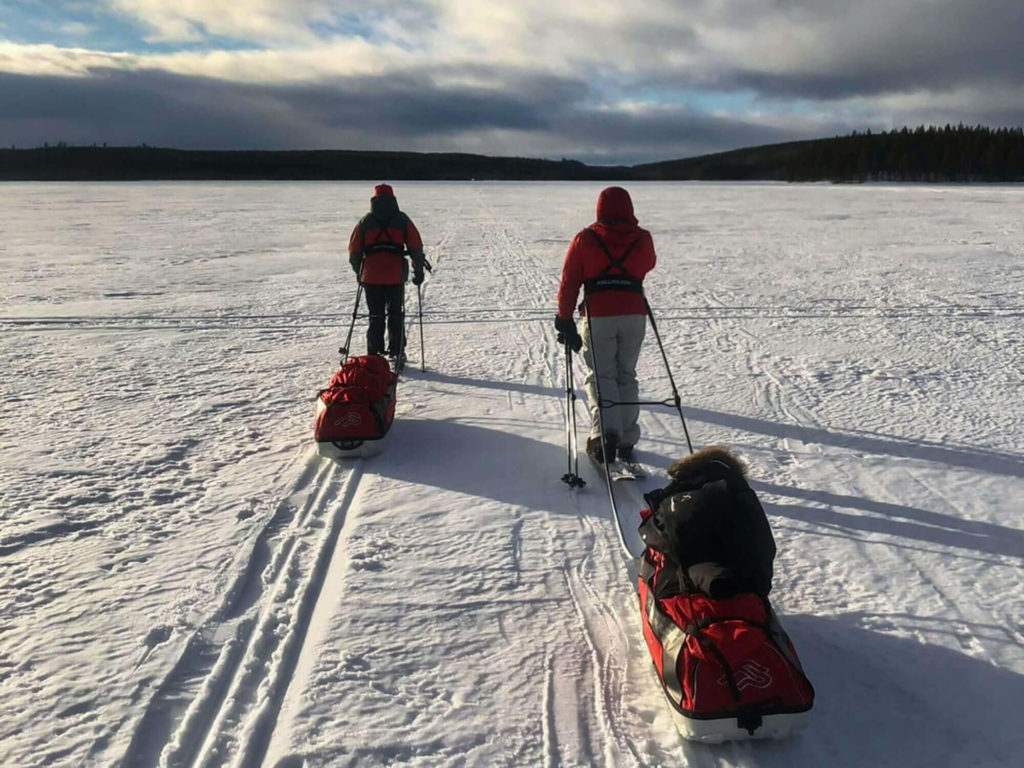
Legs
Legs are less sensitive to cold. A thermal base layer + waterproof ski pants are sufficient. And wherever you’re going in Lapland or Scandinavia—bring your swimsuit. Sauna culture is big up there!
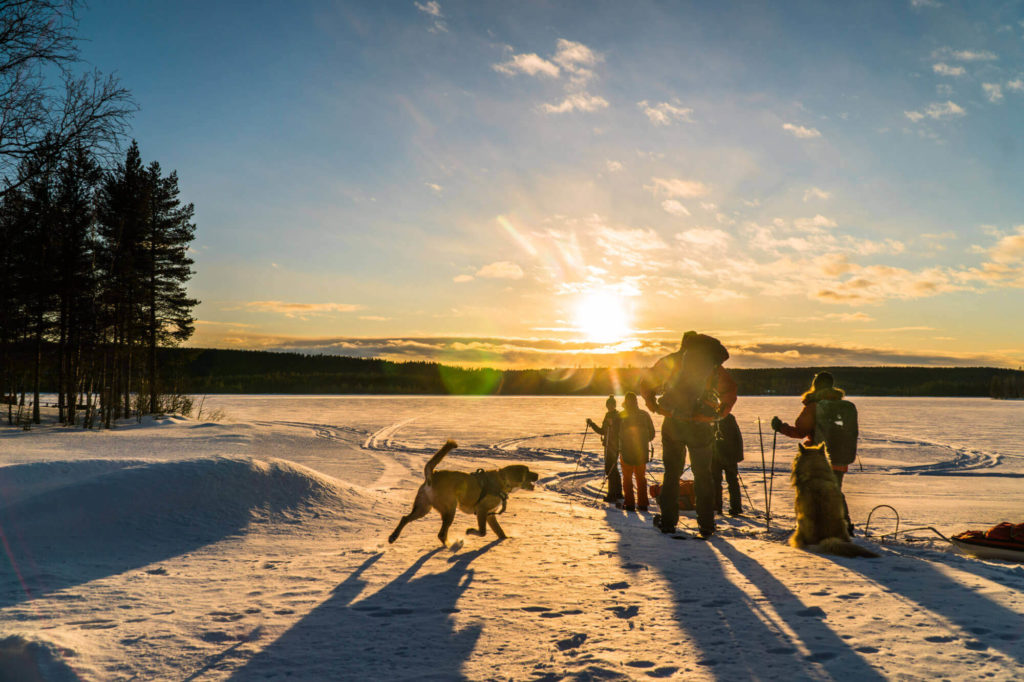
Notes on Cold Weather Gear
Extreme cold gear is expensive. If you plan to visit the Far North often, it’s worth buying quality gear. But if it’s just a one-time trip, renting or borrowing gear is better. At Flarken Adventure, we provide jackets, trapper hats, balaclavas, mittens, boots, overalls, etc. You just need to bring the basics: thermal underwear, fleeces, socks, ski pants, and jacket. If you do invest, buy quality items—they’ll last much longer than cheap gear that loses shape and warmth after a few washes.
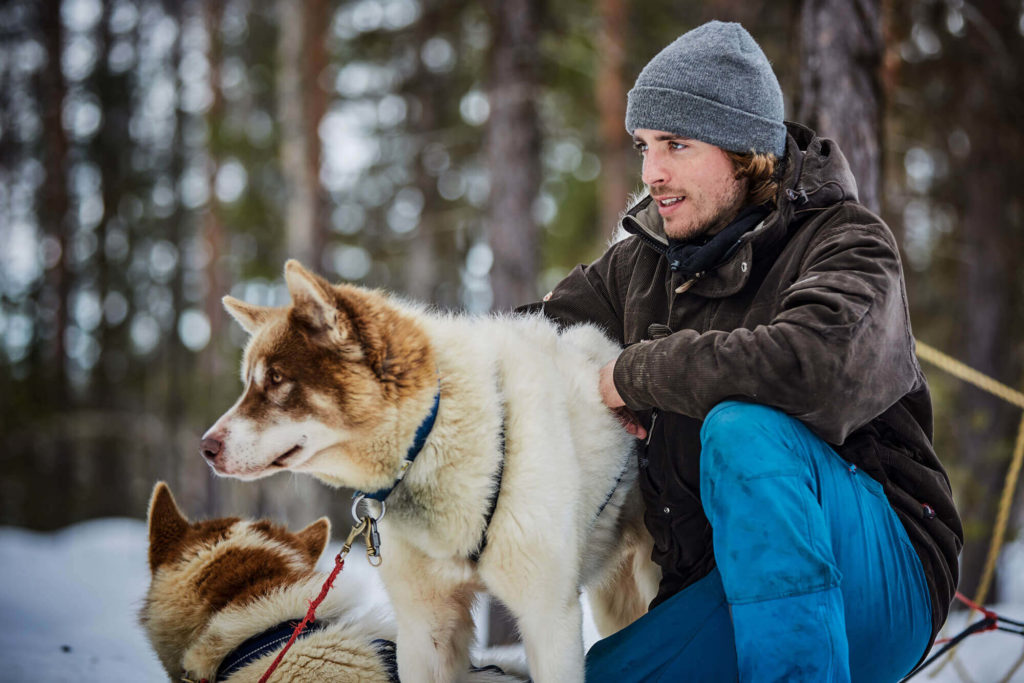
Our Tips for a Trip to the Far North
Even with the best gear, you’ll get cold at –30°C, especially if you’re not moving. Always keep moving—hop in place, wiggle your toes, walk around—to keep blood circulating. For example, when dog sledding, some moments are physical (running or pushing the sled), others are passive (gliding). During the latter, move your feet or jog behind the sled to warm up.
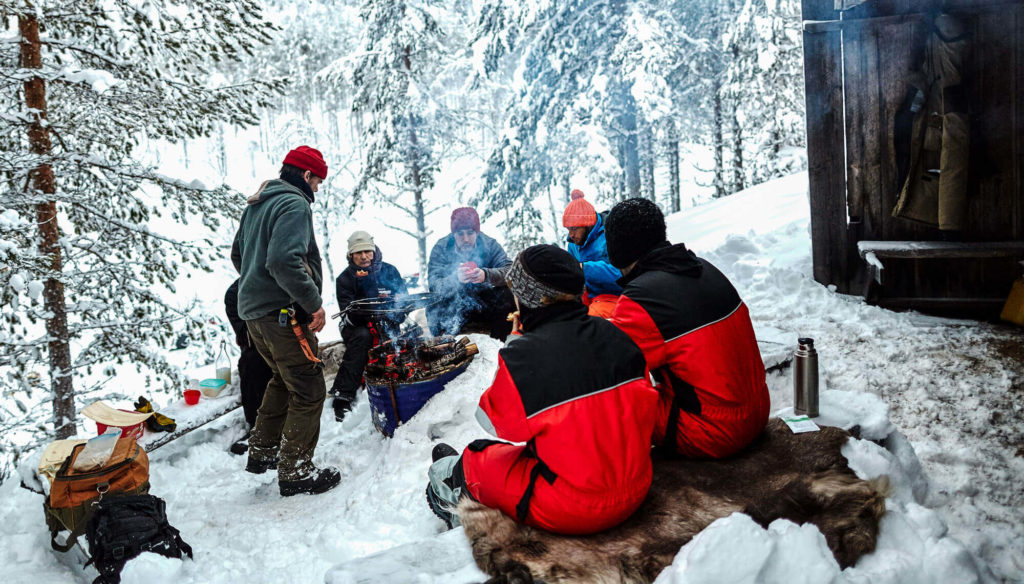
Hand Warmers
Many travelers bring hand/foot warmers. They help warm extremities during static moments. Reusable warmers are best—more eco-friendly.
Eat Fatty Foods!
Cold burns more calories—so eat more! Your body will crave fat in winter—butter, cheese, meat—go for it! The cold also dehydrates—drink plenty of water and avoid too much coffee or black tea (diuretics). Choose herbal teas, green tea, or rooibos.
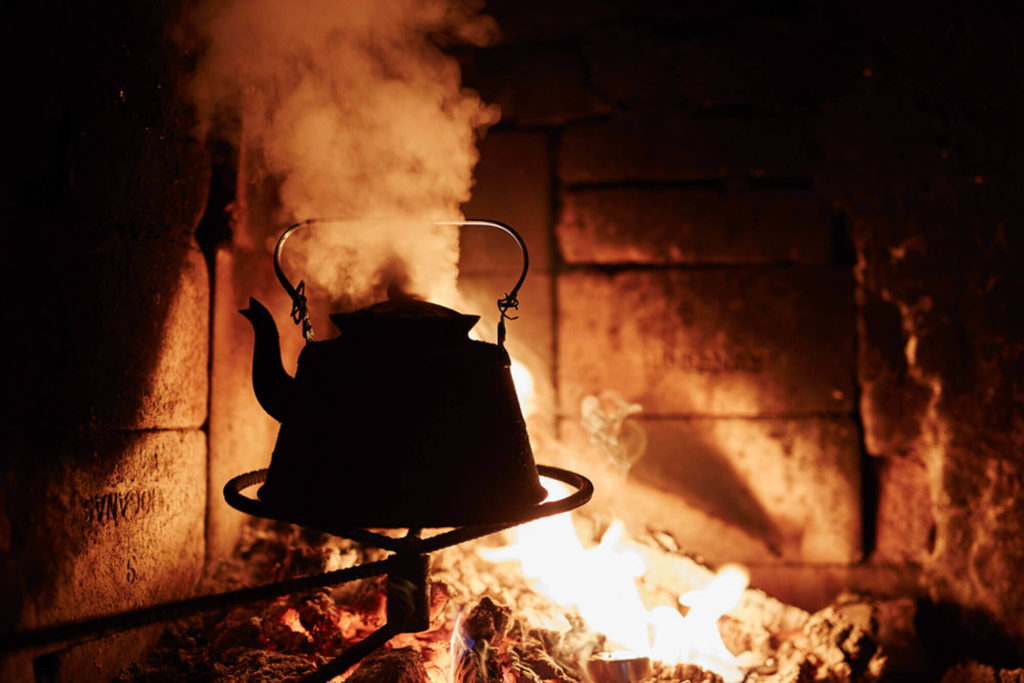
Skin Care
Cold air dries the skin, but don’t use regular moisturizers in the morning. Most contain water, which can freeze and damage your skin. Instead, use natural oils like argan, coconut, almond, jojoba, or shea butter.
Electronics and the Cold
Phones, cameras, tablets, etc., don’t like the cold. The colder it gets, the faster they drain—or shut down completely. Bring a portable battery if you’re off-grid. In our trips, you may go several days without electricity (e.g., 4 days on the dog sled expedition).*

Pro tip: Keep electronics in an inner jacket pocket, close to your body, to extend battery life.
You’re now ready for a dream trip to the Far North! With the right gear and a few key tips, extreme cold becomes accessible to everyone. As we say up here in the North:
“There’s no such thing as bad weather, only bad clothing.”
Read also :
- SLED DOG BREEDS : THE MAIN ARCTIC WORKING DOGS
- THE INTO THE WILD BUS : EXPERIENCE WILDERNESS IN THE HEART OF SWEDISH LAPLAND
This post is also available in:  Français
Français
